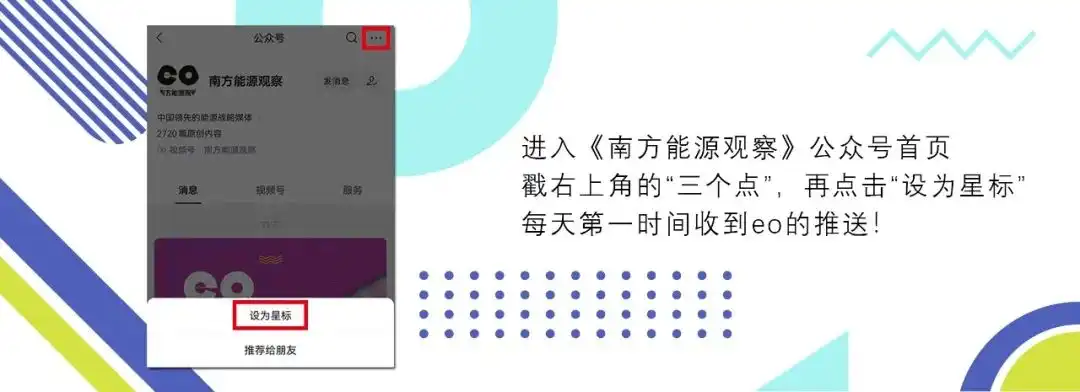The installed capacity of new energy has surged, and the pressure on consumption has intensified
全文1001字,阅读大约需要2分钟
Reproduction in any form without permission is strictly prohibited

Southern Energy Watch
micro-signal:energyobserver
Welcome to submit, submit email:

Huang Yanhua
The impact of the massive growth in installed capacity of new energy is emerging. Entering March, new energy output in Gansu, Shaanxi, Hubei and other places hit record highs.
On March 7, 2024, Gansu Power Grid's new energy power generation output reached 22.31 million kilowatts, exceeding 22 million kilowatts for the first time, accounting for 68.55% of the province's total power generation output and 103.94% of the province's power load at that time, setting a record high. At 11:56 on March 11, Shaanxi's new energy power generation output reached 15.67 million kilowatts, a historic breakthrough of 15 million kilowatts, an increase of 4.5% from the previous maximum, accounting for 54.3% of the power grid's electricity load at that time. At 11:37 on March 11, the new energy power generation output of Hubei Province reached 20.05 million kilowatts, exceeding 20 million kilowatts for the first time, an increase of 3.29 million kilowatts compared with the extreme value in 2023, a year-on-year increase of 19.60%, accounting for 68% of the province's electricity load at that time.
Public information shows that as of the end of 2023, Gansu's installed capacity of new energy and new energy storage reached 54.92 million kilowatts, a year-on-year increase of 54.8%, accounting for 61.3% of the province's installed capacity, ranking second in the country. Wind power and solar power generation have become the province's first and second largest power sources. As of the end of February 2024, Hubei Province's installed capacity of new energy was 34.8568 million kilowatts, of which wind power and photovoltaic were 8.4885 million kilowatts and 26.3683 million kilowatts respectively. New energy installed capacity accounted for one-third of the province's total installed capacity.
The rapid growth of new energy installed capacity has further highlighted the problem of consumption, and the consumption pressure may intensify in 2024. Recently, Qinghai Province, which has the highest proportion of clean energy installed capacity, is publicly soliciting opinions on adjusting the peak-valley time-of-use tariff policy. The draft for soliciting opinions proposes that in order to better guide users to cut peaks and fill valleys, improve the supply and demand of electricity, and promote the consumption of new energy, it is proposed to adjust the peak and valley time for industrial and commercial users who implement the peak-valley time-of-use electricity price policy. After adjustment, the peak time is 7:00-2:00-9:00, 17:00-23:00; low peak 9:00-17:00:00-06:00 and 20:00-24:00. The electricity price during the peak period shall be implemented at 63% higher than the flat period electricity price, and the electricity price during the valley period shall be implemented at 65% lower than the flat period electricity price.
The double increase in installed capacity and electricity generation from new energy sources is changing the division of time-of-use electricity price periods. In the past, daytime peak electricity consumption periods are gradually being adjusted to low-valley periods. The adjustment of time-of-use electricity price periods can guide enterprises to avoid peak production. Some high energy-consuming enterprises are sensitive to electricity prices, and their production plans vary accordingly, producing in low-valley periods and stopping production in peak periods. The adjustment of time-of-use electricity price periods will also affect the operation of coal-fired power generation, and coal-fired power generation will be transformed into deep peak regulation during the low-valley period of new energy power generation.
Transmission outside the province has become one of the important forms of promoting consumption in new energy provinces. Around the time of the 2024 Two Sessions of the NPC and the CPPCC, the Party and government leaders of Gansu, Qinghai, and the Xinjiang Uygur Autonomous Region successively held working meetings with the State Grid Corporation of China, with the hope of accelerating the transmission channel construction and expanding the scale of power transmission.
Promoting clean energy consumption through electricity markets is also an important initiative. Shaanxi Province has proposed that in order to ensure that all the new energy that should be generated is generated, it will rely on the provincial electricity spot market and the electricity ancillary service market to help reduce waste and increase generation. The recently released "2024 Energy Work Guiding Opinions" proposed the release of opinions on deepening electricity market reforms to promote high-quality development of new energy.
Zhao Kebin, a senior expert in the power industry, believes that high penetration may lead to deflation of wind and solar value. Under the condition of limited system regulation resources, high penetration of new energy may lead to a rise in the abandonment rate of electricity, lower spot prices, and a decrease in both the operating hours and settlement prices of new energy stations.
Editor Chen Yifang
Review Jiang Li
